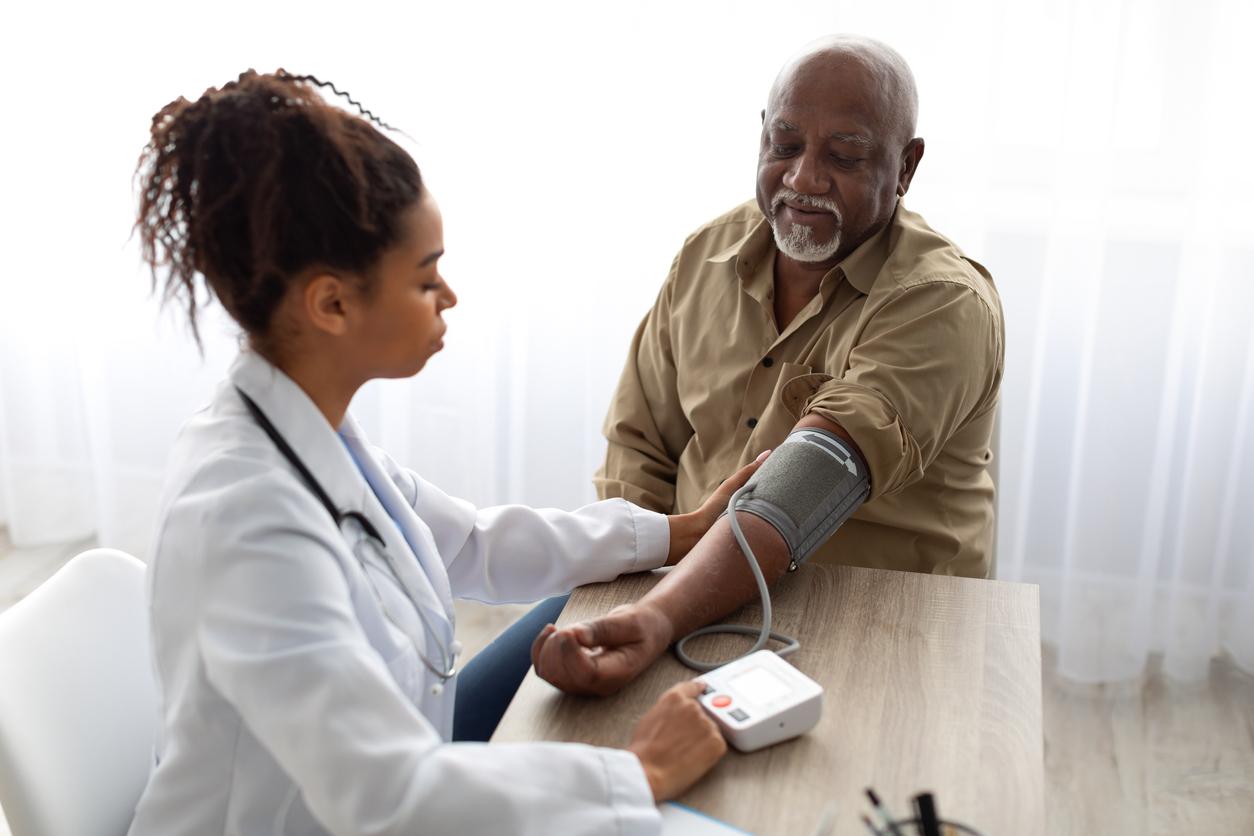A new molecule targeting a previously unused metabolic pathway in arterial hypertension is promising. By targeting aminopeptidases-A in the brain, this treatment may complement current treatments.

A swallow in the fall, this is how we could qualify the good news of the validation of a new class of antihypertensives at the American congress of cardiology, the American Heart Association, in Chicago.
It has been more than 30 years since a new metabolic pathway was targeted in this common disease.
Many badly treated patients
However, in the treatment of arterial hypertension, the needs remain glaring: more than 30% of the patients remain difficult to treat and nearly 50% of the patients are not with the objectives, in spite of a treatment associating sometimes 3 molecules.
Obesity and certain ethnicities also compromise the effectiveness of current treatments, with a real problem in black populations where hypertension often begins earlier. The apparent resistance of hypertension to current treatments may be related to obesity, salt hypersensitivity and low renin activity.
A new target in the brain
A renin angiotensin system exists in the brain causing a stimulation of blood pressure tone. Angiotensin III is, in fact, one of the most powerful peptides of the cerebral renin-angiotensin system.
This peptide contributes to an increase in blood pressure by three different mechanisms: increase in the concentration of vasopressin, increase in the activity of sympathetic neurons associated with vasoconstriction of the vessels, and baroreflex inhibition.
An aminopeptidase A inhibitor
the firibastat is a small molecule that has a very unique mechanism of action in hypertension, in that it acts on the brain and not on peripheral organs like most other anti-hypertensives. It is the first aminopeptidase-A inhibitor.
This molecule, administered orally in the form of a prodrug, is capable of penetrating into the brain and selectively inhibiting aminopeptidase A, which will block the transformation of angiotensin II into angiotensin III in the brain. All this leads to a reduction in vasopressin release and sympathetic activity, as well as an improvement in the baroreflex response.
A validation study
New Hope is a phase II study carried out on 218 hypertensive patients and, after 8 weeks of treatment, a significant reduction in blood pressure is observed. At 8 weeks, systolic blood pressure had dropped by 9.7 mm Hg (p<0.0001) and diastolic by 4.3 mm Hg (p<0.0001), a consistent drop regardless of patient type and race. Tolerance was good, with no particular neuropsychiatric effects.
After a long journey through the desert, the arrival of a new antihypertensive is good news given the extent of unmet needs. That this molecule targets a new pathway complementary to other metabolic pathways used by current treatments is even better. The fact that this pathway is central excites the curiosity and interest of specialists in hypertension, because no molecule with a central action is currently used, with some exceptions.
Interview on aminopeptidases-A inhibitors: Fabrice Balavoine, Vice-President research and Development Quantum Genomics, Paris

.














